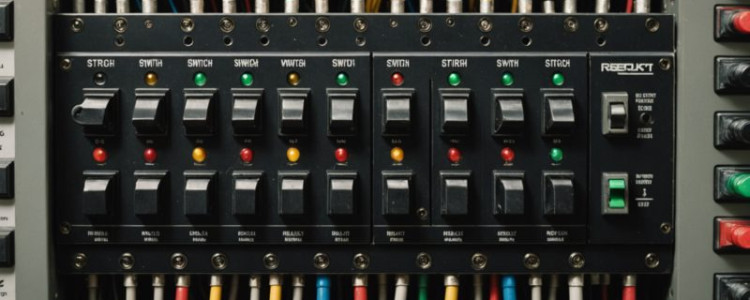In the realm of electrical systems, the main switch serves as a crucial component that ensures safety, reliability, and functionality. Selecting the appropriate main switch can be a daunting task, given the plethora of options available in the market. The aim of this article is to demystify the process of choosing a main switch, offering insights into various types, their features, and key considerations for purchasing. By exploring categories available through platforms like prof-elec.es, consumers can make informed decisions that cater to their specific electrical needs.
Understanding Main Switches
Main switches are essential devices that control the flow of electricity to a building or an electrical system. They provide a central point for electrical disconnection and can safeguard against potential hazards such as short circuits and overloads. In essence, the main switch acts as a gatekeeper for electrical current, ensuring that power is distributed efficiently and safely throughout a structure.
Types of Main Switches
Main switches can generally be categorized based on their design and functionality. Here is an overview of the most common types:
- Isolator Switches: Designed to ensure that electrical circuits are completely isolated for maintenance and repair, isolator switches provide a safe way to disconnect power.
- MCB (Miniature Circuit Breakers): These switches automatically interrupt electricity flow in case of overloads or short circuits, offering an essential layer of protection.
- MCCB (Molded Case Circuit Breakers): Suitable for higher power applications, MCCBs provide protection against overloads and short circuits, and are adjustable, accommodating various current ratings.
- RCD (Residual Current Devices): Protecting against electrical shock and fire risks, RCDs detect imbalances in electrical currents and disconnect power promptly.
Key Features to Consider
When shopping for main switches, several features stand out as vital considerations:
- Current Rating: It is crucial to select a main switch that can handle the current load of the entire electrical system. This rating is typically measured in Amperes (A).
- Voltage Rating: The voltage rating ensures compatibility with the electrical system. Common ratings include 230V and 400V.
- Number of Poles: Main switches come in single-pole, double-pole, and three-pole configurations, which correspond to the specific requirements of the wiring system.
- Tripping Characteristics: Understanding the tripping characteristics, like Type B (used for residential applications) or Type C (used for industrial applications), is essential for proper circuit protection.
Navigating ProfElec.es for Main Switches
The website ProfElec.es offers a wide selection of main switches categorized for ease of use. Shoppers can explore various brands and specifications, allowing them to compare options side-by-side. Here are some steps to effectively navigate the site:
Step-by-Step Guide for Purchasing
- Access the Website: Start by visiting ProfElec.es and navigate to the ‘Main Switches’ section.
- Filter Options: Utilize the filtering options to narrow down choices based on specifications such as brand, rating, and price range.
- Compare Products: Select multiple products to compare their features, prices, and user reviews for a more informed selection.
- Add to Cart: Once a decision has been made, add the chosen main switch to the shopping cart for purchase.
Pricing and Budgeting for Main Switches
Understanding the pricing framework for main switches can significantly aid in budgeting for electrical projects. Prices typically vary based on brand, type, features, and specifications. The following table illustrates a general pricing guide for different types of main switches:
| Type of Main Switch | Typical Price Range (€) |
|---|---|
| Isolator Switch | 10 — 50 |
| MCB | 15 — 70 |
| MCCB | 50 — 150 |
| RCD | 30 — 100 |
Best Practices for Installation
Once the right main switch has been purchased, proper installation is vital for safety and efficiency. Here are some best practices to follow:
- Always consult with a certified electrician for installation to ensure compliance with local codes and standards.
- Ensure that the installation area is dry and free from moisture to prevent electrical hazards.
- Conduct regular maintenance checks and ensure accessibility to the main switch in case of emergencies.
Conclusion
Choosing the right main switch is an important decision that affects the safety and functionality of any electrical system. With a comprehensive understanding of the types, features, and installation practices, individuals can confidently make informed selections that best meet their needs. Websites like ProfElec.es serve as valuable resources, providing a wide array of options, allowing consumers to explore, compare, and ultimately purchase the right main switch for their specific requirements.
This article covers multiple aspects of main switches, integrating informative content, a structured layout, and key considerations that facilitate understanding and encourage thoughtful purchasing decisions.






